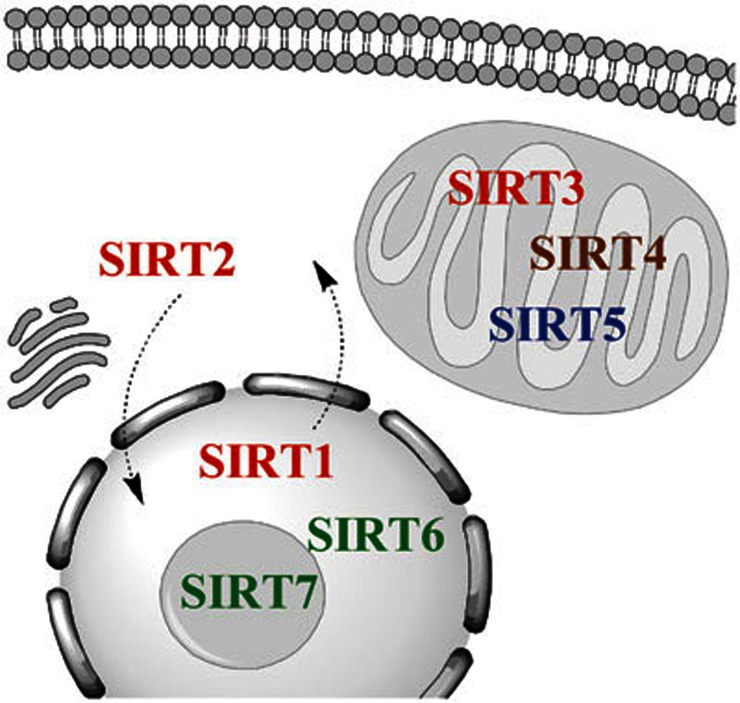Figure 1.
Subcellular localization and function of the mammalian sirtuins. The seven sirtuins are categorized into four groups based on their sequence homology, and these proteins have varied enzymatic activities and subcellular localizations18. Class I sirtuins (SIRT1, SIRT2, and SIRT3) are depicted with red text. These proteins have robust deacetylase activity in the presence of NAD+19. SIRT1 is generally thought to have a nuclear localization, although cytoplasmic SIRT1 has also been reported in neurons and other cell types28,29,30,31,32, SIRT2 is a predominantly cytoplasmic protein that may shuttle to the nucleus33,34 and SIRT3 is a mitochondrial protein35. The class II sirtuin (SIRT4) is highlighted in brown. This protein has ADP-ribosyltransferase activity and is also a mitochondrial protein20. The class III sirtuin (SIRT5) is depicted in blue and this mitochondrial enzyme has NAD-dependent demalonylase and desuccinylase activities in addition to a weaker deacetylase activity19,21,22. The class IV sirtuins (SIRT6 and SIRT7) are in green text. SIRT6 is a nuclear protein with weak deacetylase activity and ADP-ribosyltransferase activity23,24,25, and SIRT7 is localized to nucleoli and it has deacetylase activity19,26,27.

